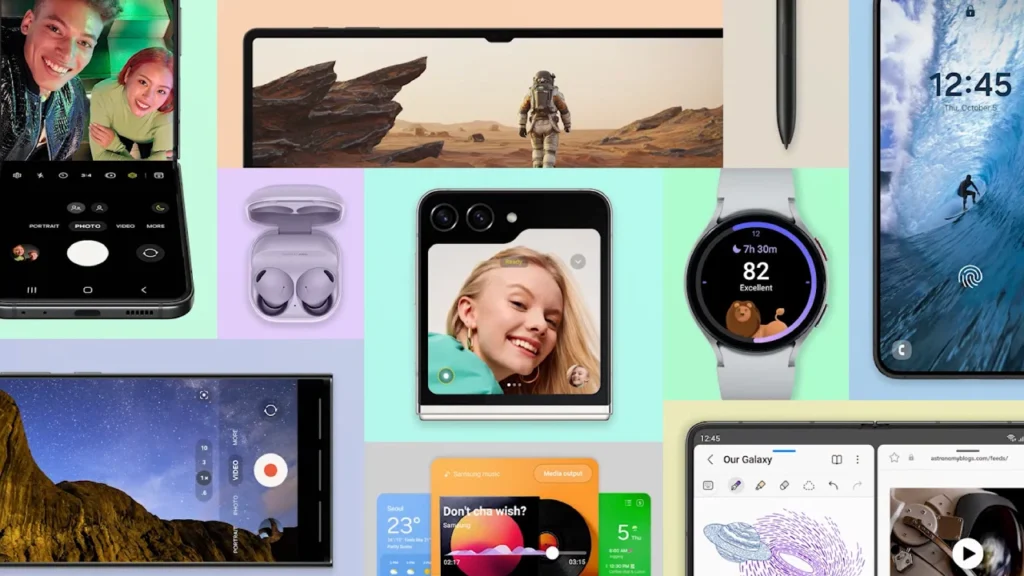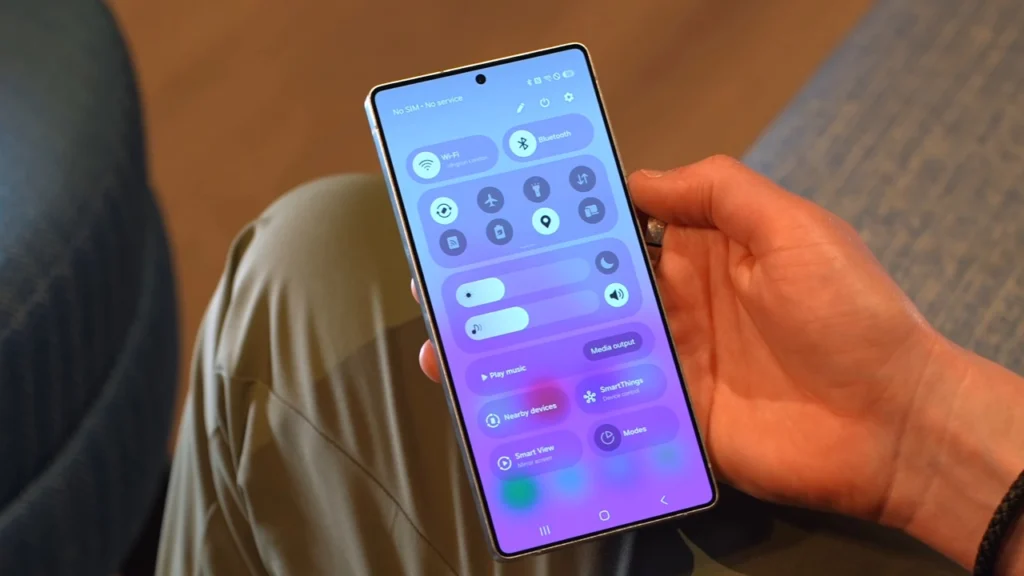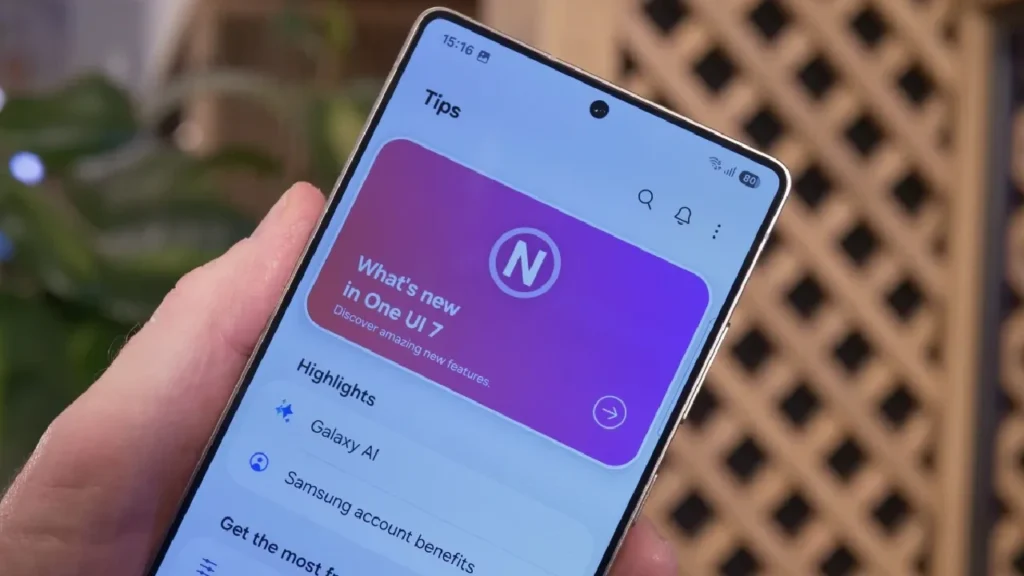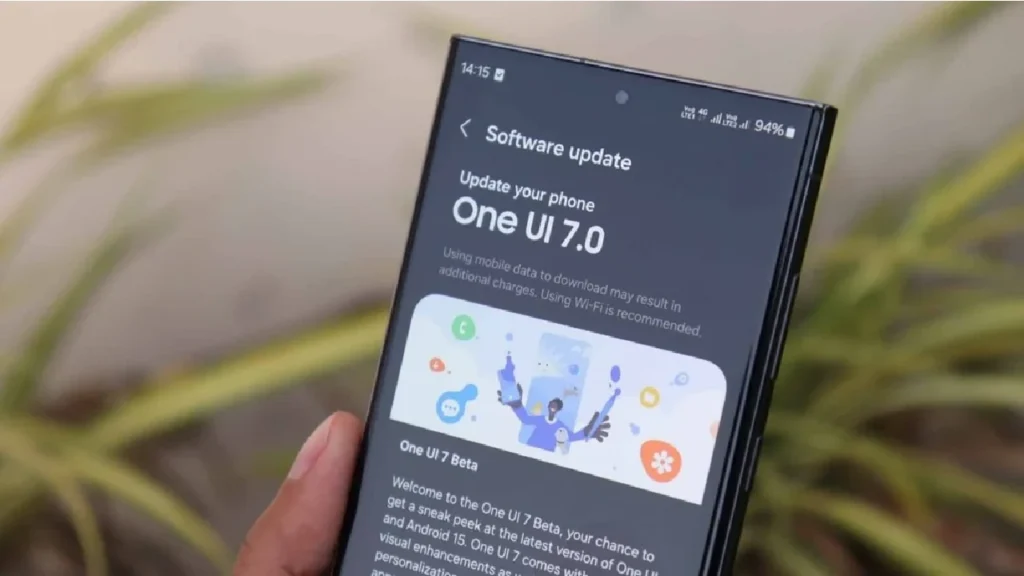In the rapidly evolving world of smartphones, software updates are a critical part of the user experience. For a company like Samsung, one of the global leaders in Android bias major updates like One UI 7 aren’t just about ornamental advancements; they are about buttressing consumer trust, extending device life, and integrating slice-edge technologies.
Unfortunately, the rollout of One UI 7, based on Android 15, didn’t go according to plan. pronounced by detainments, unanticipated bugs, and indeed security issues, the update’s release was one of the most turbulent in recent Samsung history. This composition explores the challenges Samsung faced during the One UI 7 rollout, the impact on druggies, and the corrective conduct the company has since enforced.
Table of Contents
What Went Wrong Despite the Ambitious Vision of One UI 7 Bugs
Before diving into the problems, it’s essential to understand why One UI 7 was so widely anticipated. As Samsung’s custom Android skin, One UI has progressed significantly over time. One UI 6, released in late 2023, brought visual advances and smoother transitions, but One UI 7 promised much more: a smarter, more responsive interface driven by AI and machine literacy, a complete overhaul of system robustness, and tighter integration with Google’s Android 15 features.

Samsung’s inventors had been working behind the scenes for further than two years, trying a substantial shift rather than an iterative update. According to Sally Hyesoon Jeong, EVP and head of the frame R&D platoon at Samsung’s mobile division, One UI 7 was designed from the ground up, not just concentrated on Android 15. That monumental development trouble, while estimable, contributed to the first major chain of detainments.
Delay in the Beta Program Red Flags:
Samsung’s beta testing program generally starts several months before a sanctioned release. In former times, betas for major updates rolled out as early as August or September. Still, for One UI 7, the first beta wasn’t available until December 5, 2024, and it was exclusive to the Galaxy S24 series. This unforeseen divagation from the normal beta schedule bothered numerous druggies. Inventors and tech pundits suspected that Samsung had encountered compatibility issues with Android 15’s new architecture and had difficulty finishing their battery machine in time. These detainments created a ripple effect, pushing back development for aged Galaxy bias and leaving druggies with inconsistent rollout prospects.
Bugs in the Beta A Preview of Trouble Ahead:
Once the beta did arrive, the issues snappily surfaced. Beforehand, adopters of One UI 7’s beta interpretation reported several bugs, including Lag during screenshot, Inconsistent refresh rate changes, Camera app crashes, announcement center failures, and Battery drain on idle. One particularly frustrating issue was pause when taking screenshots, a point numerous druggies calculate on diurnal. While putatively minor, this kind of UI hiatus degraded the decoration feel Samsung aimed to project. To Samsung’s credit, they addressed this pause in the alternate beta update by optimizing GPU and memory operation protocols, but the broader concern was whether the software was truly ready.

The Official Launch: More Bugs Than Features
Despite the bumpy beta, Samsung pushed ahead with the global launch of One UI 7 in April 2025, beginning with its flagship lineup, the Galaxy S24, Z Fold 6, and Z Flip 6. Still, the rollout snappily turned from excitement to damage control.
The Unlock Bug
Shortly after the global release, techies reported a critical issue: some Galaxy S24 biases couldn’t be uncorked. After installing One UI 7, the cinch screen came unresponsive, leaving druggies locked out of their phones entirely. For a point as abecedarian as device access, this bug was disastrous. Samsung acted presto, issuing a temporary suspension of the One UI 7 update across all models, encyclopedically — indeed fact that they hadn’t shown any problems. While this demonstrated Samsung’s commitment to stoner safety, the pause also added to stoner frustration and generated negative comments.
Security Vulnerability The Secure brochure Fail :
Beyond bugs and crashes, a more serious issue surfaced- a sequestration vulnerability in the Secure brochure — a Samsung point designed to keep sensitive lines, prints, and apps hidden and translated. A number of druggies discovered that prints stored in their Secure Folder were being automatically added to the device’s Gallery app Stories, a point that creates dynamic slideshows. These prints, intended to be private, were now being surfaced in relaxed surroundings, potentially exposing nonpublic or particular content to others with access to the phone.

Samsung conceded the issue and advised druggies to disable “ bus- produce stories ” in the Gallery settings for Secure Folder druggies. While this eased the problem temporarily, the vulnerability stressed the troubles of inadequate quality assurance, especially when dealing with sensitive data protection.
Communication Breakdown: A Missed Occasion
A significant source of frustration during the rollout wasn’t just the specialized issues but the lack of clear communication from Samsung. druggies affected by the update pause or bugs were left guessing – No centralized dashboard or schedule updates were handed. -Social media brigades gave inconsistent responses. – Community chairpersons remitted questions to forthcoming “ patches ” without timelines. This created an information vacuum, which further undermined Samsung’s credibility. In contrast, companies like Apple and Google frequently issue real-time updates and incident logs when issues are discovered, furnishing transparency indeed when things go wrong.
Post-Rollout Fixes: Making effects Right
Over the coming weeks, Samsung began rolling out hotfix patches to resolve major problems. The cinch screen bug was fixed with a recovery charge patch delivered via the Galaxy Store. The Secure Folder bug was addressed with a garçon- side update to the Gallery app. Stability advancements were issued for bias with Exynos and Snapdragon variants.

Samsung also proceeded with the One UI 7 rollout by late April, with redundant caution and region-specific testing. Bias similar to the Galaxy S22 series, A54, and Z Fold 5 were next in line to receive the stable update. By early May 2025, the maturity of flagship Galaxy phones was successfully streamlined to One UI 7, albeit later than initially planned.
What’s New in One UI 7( When It Works) :
Despite the rocky rollout, One UI 7 brings numerous useful features Smart Hub, A new AI dashboard that analyzes operation habits and offers suggestions. Predictive contraptions that acclimate to your routine( e.g., rainfall in the morning, timetable in the evening), Expanded Multitasking, more disunited-screen support, and new gestures for large-screen bias like the Z Fold. Battery Health Monitor, inspired by iOS, shows battery wear and tear and capacity over time. Once bugs were addressed, these features worked as intended and received positive feedback from techies who valued customization and smart robotization.
Assignments for Samsung:
The One UI 7 rollout is a case study in how established tech titans can stumble, but it’s also an occasion for growth :
- Beta programs must be wider and longer, not confined to the rearmost flagships.
- Communication needs to be consolidated immaculately with an update gate or real-time shamus
- Security checkups must be prioritized before release, especially for features like Secure Folder. 4. Further modular updates can allow Samsung to patch critical functions without demanding to halt entire rollouts.
Samsung has proven able to conform snappily, and it appears that upcoming updates like One UI 8 are formerly being presto- tracked, conceivably arriving in beta as early as August 2025.

Conclusion: A Bump in the Road, Not the End of the Journey:
While One UI 7 began as one of Samsung’s most problematic software releases in recent memory, the company’s response, however imperfect, was eventually effective. By breaking the rollout, fixing bugs, and re-testing regionally, Samsung managed to recover from a rocky launch. The update also served as a memorial of how critical software stability, stakeholder trust, and security translucency are in the moment’s hyper-connected world. Going forward, Samsung has a chance to make up for these assignments and deliver smoother, smarter updates that reflect both invention and trustworthiness.